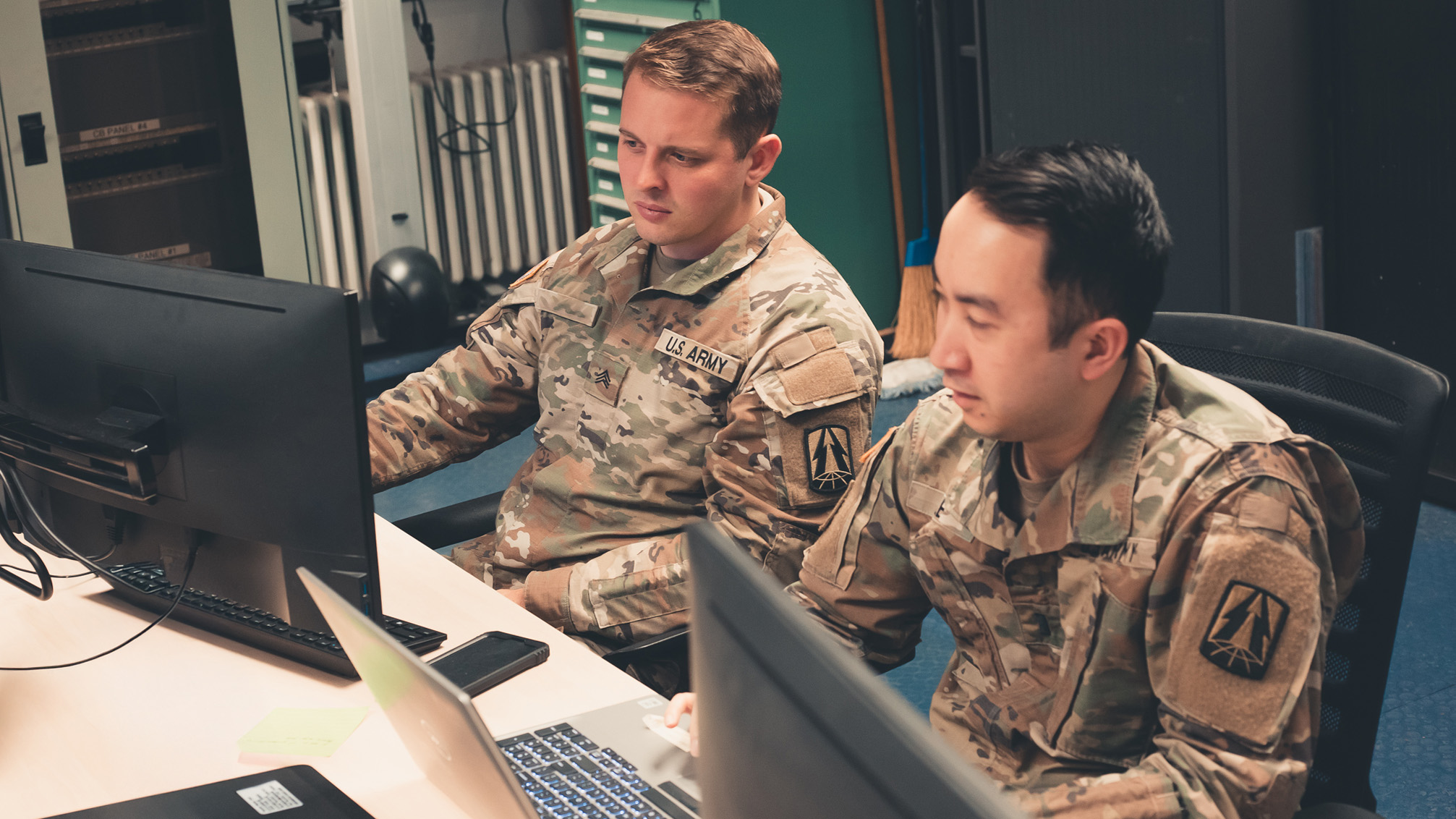Accelerating secure access with CSfC

Sensitive compartmented information facilities (SCIFs) are critical to safeguarding our nation’s classified data secure while in use or at rest. However, access to SCIFs is becoming increasingly more limited as more government employees return to the office. Given the time, cost, and complexity of expanding these facilities, alternative solutions are needed to meet growing demand efficiently.
Moreover, SCIF capabilities are also often unavailable or difficult to access for those on travel or deployed to disconnected, disrupted, intermittent, or limited bandwidth (DDIL) environments. This exponentially exacerbates inefficiencies, resulting in reduced productivity, excessive costs, and disruptions to time-sensitive operations and missions.
Commercial Solutions for Classified (CSfC) provide a cost-effective, NSA-approved alternative to traditional SCIFs and Type 1 encryption systems. It uses layered commercial encryption to deliver secure capabilities through devices like laptops, reducing the need for physical infrastructure, long-term costs, and specialized training, while supporting operational agility and access without compromising security.
Here are three ways that further adoption of CSfC can drive government efficiency, reduce costs, and enable timely and secure classified communications.
1. Expand secure workspaces without costly infrastructure
Stringent security requirements exist to protect classified information access while in SCIFs. This includes regulations around advanced hardware, IT and cybersecurity protections, secure entry points, reinforced walls and doors, electronic detection systems, and 24/7 security staffing.
With limited SCIF space as employees return to offices, agencies can invest in a CSfC-registered environment that allows for easy expansion, eliminating the need for construction, fiber pulls, protected distribution systems, and extensive LAN installations. Agencies can scale simply by adding CSfC-connected laptops for secure anytime, anywhere access.
Use cases:
- Government agencies, field agents, and military personnel can access classified data in real time, anywhere.
- A cost-effective alternative to SCIF expansion for sites with limited space and high demand.
2. Increase worker efficiency and ensure operational continuity
An employee’s closest SCIF can be anywhere from their own office to across state lines. Those in DDIL conditions often have no nearby access at all. The Department of Defense mandates monthly DRRS-S Readiness Reports be submitted in a classified space, so personnel without nearby SCIFs are forced to travel, sometimes for hours, to another location.
Once personnel enter SCIFs, they must also leave unsecure devices at the door, disconnecting them from texts, emails, or other important but unclassified communications.
With NSA-registered CSfC technology and secure local broadband, personnel can securely access and submit classified data from their designated workspaces — or wherever they may be — eliminating lengthy commutes.
Additionally, CSfC’s data at rest (DAR) protections enable frontline leaders and other personnel in critical areas to remain productive even in limited-connectivity environments. By empowering users to collaborate across distributed locations, CSfC minimizes disruptions caused by travel and network differences.
Use cases:
- Emergency responders, military personnel, and field operatives can maintain secure communication during operations or disaster response.
- Officers and agents without SCIF access can avoid costly, disruptive travel while staying efficient.
3. Consolidate secure environments while scaling with commercial technology
The traditional method of maintaining multiple and separate network infrastructures is operationally inefficient, and customized defense industry hardware and technology solutions can require years of development and large investments before they are delivered.
CSfC simplifies network architecture by consolidating multiple classified environments of the same security level onto a single gateway, reducing operational costs and improving efficiency. By minimizing disparate systems, organizations can mitigate risk, lower hardware investments, and simplify network management as compared to multiple gateways. This approach directly supports U.S. military modernization efforts aiming to replace costly legacy systems with a more unified global infrastructure.
Additionally, the use of affordable and available commercial off-the-shelf products in layered designs means CSfC both meets NSA-approved standards and grants government agencies access to rapidly evolving commercial technologies. This enables faster, more cost-effective adoption of new security features and capabilities than custom-built government solutions.
CSfC tools are inherently more scalable and adaptable than traditional classified network infrastructures. Because CSfC laptops are only considered classified devices while in use, users can avoid the hassle of storing them in GSA-approved security containers.
Use cases:
- Government agencies can quickly and affordably adopt new technologies and scale to meet evolving needs.
- U.S. military modernization efforts, such as those by the Army, which include eliminating costly legacy systems by consolidating networks into a global infrastructure.
Commercial solutions can drive a secure and efficient government
CSfC can reduce the need for costly new SCIFs. Archon’s CSfC Suite from CACI delivers secure network access via a single SKU for hardware, software, installation, and cyber support. CACI’s Archon Client delivers CSfC access via an all-in-one laptop and retransmission device, making users productive wherever the mission takes them.
Designed to be resistant against the emerging field of post-quantum cryptography, it provides users with a single secure laptop device to access classified networks up to top secret/sensitive compartmented information (TS/SCI) level over the internet or over government unclassified networks. By investing in these types of CSfC, government and organizations can empower users with additional secure workspaces and drive more efficient classified operations.